

Term
Project
Majuro, Republic of the marshall islands
Garett Lee • PPD619 • Smart Growth and Urban Sprawl
Majuro is a model case for the pacific islands, capable of self sustainment, where vibrant local industries, eco-conscious tourism, and innovative urban agriculture flourish alongside sustainable infrastructure, ensuring a thriving economy, healthy communities, and a built environment protected against the impacts of climate change.
OVERVIEW SUMMARY
Location & Geography
Majuro is the capitol of the Marshall Islands, located in the South Pacific, around 2,000 miles southwest of Hawaii. Majuro is a coral atoll, consisting of a narrow strip of land encircling a large lagoon. The atoll’s landmass is only about 3.7 square miles, but its lagoon spans approximately 114 square miles. The largest and most populated area is Delap, which forms the urban and administrative center of the atoll.
Demographics
Primary Languages Marshallese, English
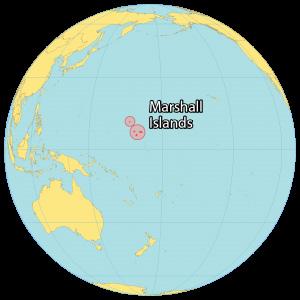
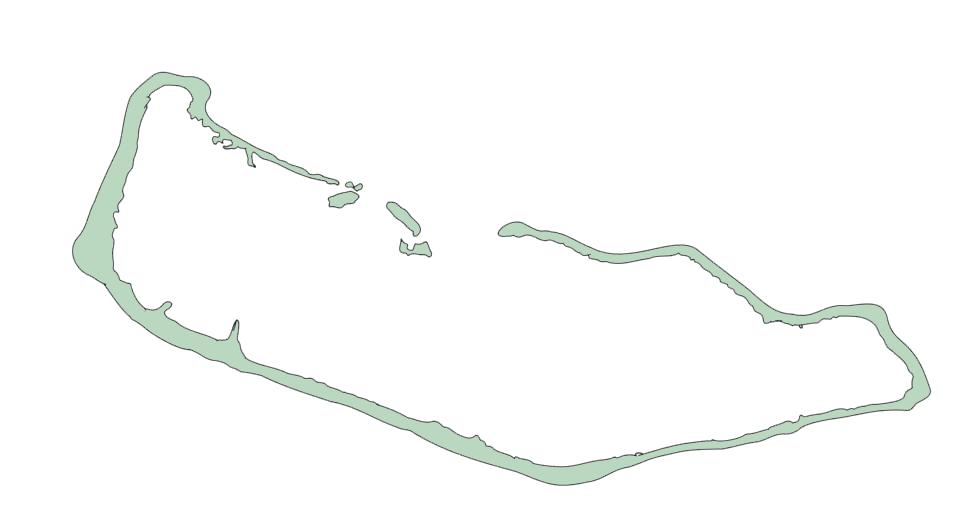

DELAP
LAURA
Delap City Center
Economic Dependency
Majuro, Republic of the Marshall Islands
The Compact of Free Association (COFA)
The Compact of Free Association is an agreement between the United States and the Republic of the Marshall Islands. Established in the mid-1980s, COFA allows these nations to remain sovereign while granting the U.S. strategic military access to their territories. In exchange, the U.S. provides financial assistance, including funding for infrastructure, health, and education, as well as the right for citizens of these nations to live, work, and study in the United States without visas.
For the Marshall Islands, the COFA reflects a shared history with the U.S., particularly stemming from its use as a nuclear testing site during the mid-20th century (Bikini Atoll). While COFA has brought significant economic support, it also highlights ongoing challenges, such as dependency on U.S. aid and concerns about compensation for environmental and health impacts from past testing. COFA is regularly renewed, with the latest renegotiation in 2023, extending the agreement for another 20 years until 2043.
Estimated aid from the U.S. spanning from 2004-2023. This accounts for roughly 60% of the government’s budget during this period.
Looking Towards the Future
Although the Compact of Free Association (COFA) between the Marshall Islands and the United States was recently renewed for another 20 years in 2023, concerns about the Marshall Islands’ economic dependency on the U.S. remain significant. The new agreement includes nearly $2.3 billion in economic assistance, which has increased annual financial support to approximately $50 million with provisions for inflation adjustments. Despite these benefits, Compact funds are set to decline over time, and there is no guarantee of indefinite U.S. support beyond the current agreement’s lifespan.
of the RMI’s GDP in 2023 is allotted to reliance on Compact funding of food and consumer goods are imported from foreign countries, much of which is imported from the United States.
This growing concern highlights the need for the Marshallese government to chart a path toward financial independence. The reliance on U.S. grants, which account for a large percentage of the national budget and public sector employment, underscores the vulnerability of the nation’s economy. The government must prioritize economic diversification to reduce this dependency. Bolstering the private sector industries, as well as finding methods for lessening the reliance of imports are both important for developing a more sustainable economic model.
TOURISM
1.1-1.4 Bolstering the Local Industry
Activating the tourism industry in the Marshall Islands (RMI) offers significant potential for developing a more robust internal economy. Majuro, as the capital, is uniquely positioned to become a premier resort destination due to its pristine environment and rich cultural heritage. The island boasts clear turquoise waters, vibrant coral reefs, and opportunities for activities such as scuba diving, snorkeling, and shipwreck exploration—attractions that appeal to eco-tourists and adventure seekers. Majuro’s beaches provide idyllic settings for relaxation, while the island’s unique culture offers visitors a chance to
Resort Typologies
experience traditional Marshallese crafts, music, and cuisine. Additionally, Majuro’s proximity to other surrounding atolls and islands enhances its appeal as a gateway for island-hopping tours, creating opportunities for expanded tourism offerings. Developing sustainable tourism infrastructure, including resorts, guided tours, and local experiences, would not only attract international visitors but also stimulate local job creation and support small businesses. By harnessing these assets, the RMI can diversify its economy, reduce reliance on foreign aid, and foster sustainable growth.
To develop a successful tourism destination in Majuro, a comprehensive plan of action should be built around the island’s natural assets, community involvement, and strategic infrastructure development. A diversified range of accommodations should be offered, appealing to different market segments. While specifics would be determine by a market and land assessment, a general framework shown below accounts for a wide range of tourists.
Price Range: $500-$800/night
Precedent Model: Amawana Luxury Resort
Targeting high-end tourists, these luxury resorts can be exclusive destinations located on the outer isles of Majuro, seperated from the main atoll. These resorts would be treated as exclusive private getaways for tourists. Important considerations would be collaborating with local landowners and providing regular transportation to and from the mainland for staff.
Price Range: $100-$200/night
Precedent Model: Marshall Islands Resort
These resorts would offer comfortable, eco-friendly accommodations in a more accessible price bracket, appealing to the growing eco-tourism sector. The existing Marshall Islands Resort in Delap may already fulfill this need.
Price Range: $80-$90/night
Precedent Model: RRE Cottages
Groups of 3-4 cottages located along the Ajeltake strip aim to provide more community integrated tourism with locals who live immediately adjacent to these developments. These cottages would offer visitors a more intimate, community-focused experience, and support local employment and businesses.
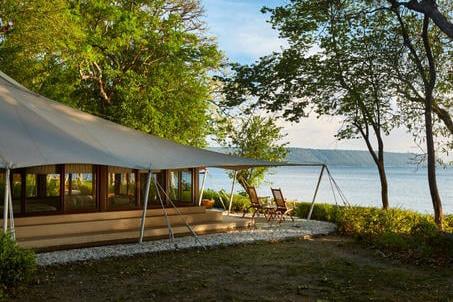


A: PRIVATE LUXURY RESORTS
B: MID-RANGE RESORT
Amawana Luxury Resort

Policy Summary: Economic Dependency
TARGET FOCUSES
1.1 Partner with developers and locals to develop key resort destinations appealing to a range of tourists.
1.2
1.3
Establish transportation network from resort housing to key tourism destinations.
Develop tourism infrastructure (information centers, bike shops, scuba shops) Provide subsidies for relevant developments.
%increase in tourist visits & visas Ministry of Finance, Office of Tourism, CMI, UPC
% increase of tourism related businesses
Conduct natural resource, land, and market evaluations to determine possible sites and development sizings. Research findings
1.4 Train locals in tourism-related jobs (hospitality, tour guides) and promote cultural tourism.
2.1 Increase production of locally manufactured goods, lessen reliance on imports
3.1 Promote the development of indoor urban farms
(see also: 7.1-7.3)
3.2
3.3
COFA, Private Developers
Promote opportunities for the sale of local goods and handicraft at public markets
Provide financial incentive for people investing in urban farming infrastructure (e.g., greenhouses, hydroponic systems). Offer tax breaks to property owners who dedicate portions of their land to farming initiatives.
Facilitate local farmers’ markets where urban farmers can sell their produce, creating a direct market for their goods. Possible locations include RRE parking lot, old Captiol building, and Delap Park.
Encourage the conversion of vacant lots and unused government properties into urban farms.
# of locals employed in tourism
# of markets held per month Ministry of Natural Resource & Commerce Local govt budget
# of urban farms established Ministry of Natural Resource & Commerce COFA, International NGO Support
# of markets held per month
% of vacant land repurposed
Environmental Sustainability
TARGET ISSUES
Global Warming: Rising Sea Levels and Flooding
Rising sea levels threaten the very existence of Majuro due to its geographic vulnerability as a low-lying atoll. With an average elevation of just 2 meters above sea level, even modest increases in sea level result in flooding, loss of land, and damage to vital infrastructure. Saltwater intrusion into freshwater lenses further compromises the availability of potable water, an
already scarce resource. Extreme weather events, such as king tides and typhoons, have become more frequent and intense, exacerbating the effects of rising seas. These challenges not only threaten physical infrastructure but also the livelihoods and cultural heritage of the Marshallese people, creating a looming risk of displacement.
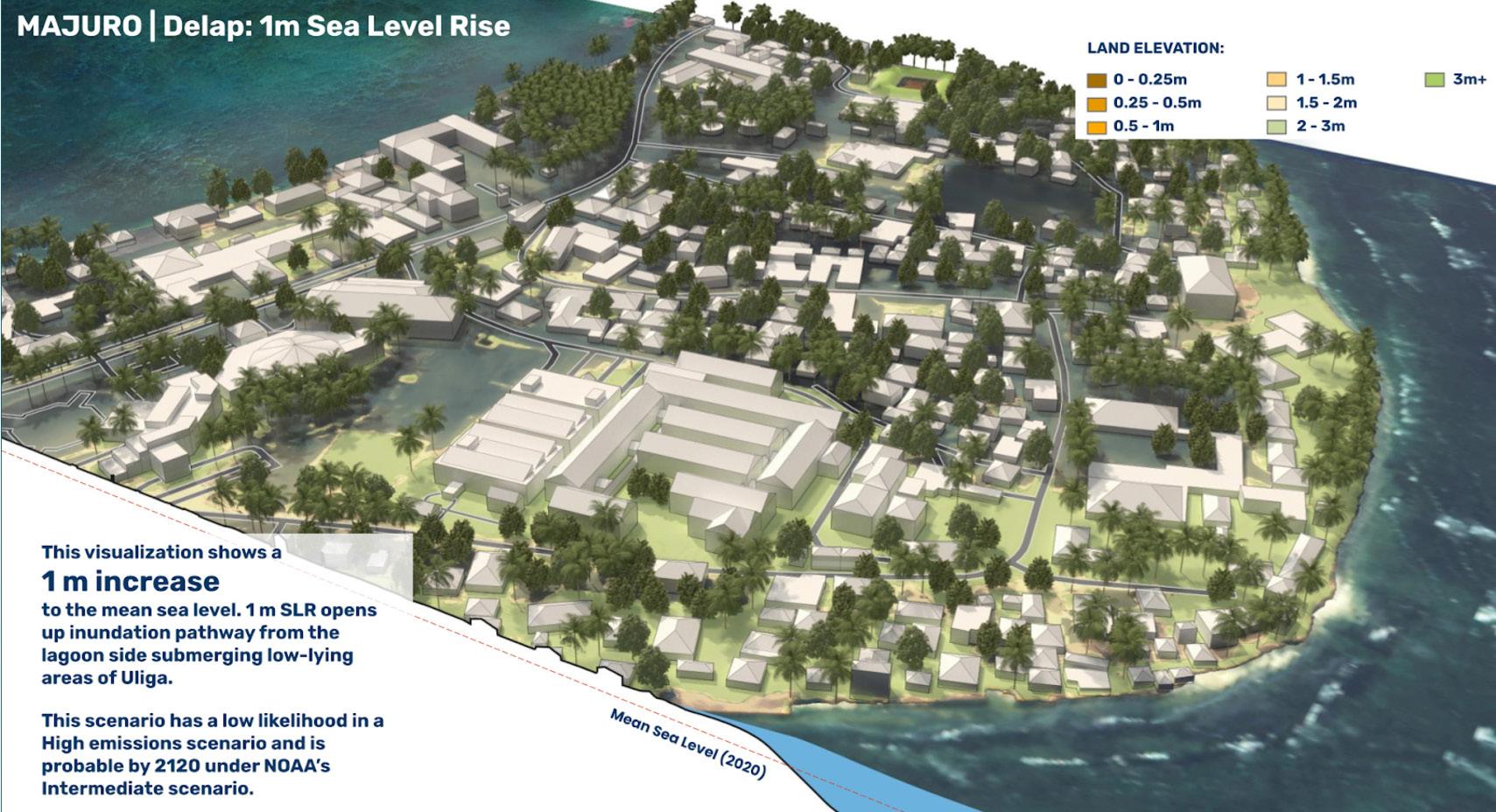
Mount Trashmore
Majuro’s waste management system is overwhelmed, with the island struggling to handle growing volumes of solid waste. Its landfill, located on a small stretch of reclaimed land, is nearing capacity, resulting in overflows and environmental contamination. Inadequate waste segregation and collection exacerbate the problem, with plastics, electronics, and abandoned vehicles scattered throughout the island. Leachate from the landfill threatens to contaminate surrounding soil and water bodies, further straining the fragile ecosystem. Additionally, the disposal of non-biodegradable materials like plastics poses a long-term environmental hazard, as Majuro lacks adequate recycling facilities.

Marshall Isalnds Journal, Dec 6, 2024
World Bank RMI National Adaptation Plan
POLICY PROPOSALS
4.1-4.2 Building Code Implementation
The Marshallese government has some building codes in place, but enforcement is inconsistent, and the existing regulations often do not adequately address the challenges posed by climate change, such as rising sea levels and increased storm intensity. With the inevitable rise of global warming, certain measures must be taken to protect the built environment. The implementation and enforcement of a building code geared towards flood adaptive construction will help Majuro protect itself from the projected increase in flooding in the near future. Such a code would incorporate modern, climate-resilient design principles tailored to the unique vulnerabilities of low-lying atolls. By mandating measures such as elevated foundations, stilted construction, flood-resistant materials, and effective drainage systems, the code can mitigate damage from floods and storm surges while enhancing the long-term sustainability of Majuro’s infrastructure.
STILTED CONSTRUCTION
Stilted architecture is a design approach where buildings are constructed on columns and stilts, lifting the habiatble spaces above ground level. By elevating the building above the potential flood level it protects the structure from flood water damage allowing floodwaters to pass underneath the building. reducing risk of water entering and damaging the building. This allows construction in areas that would otherwise be unbuildable due to frequent and intense flooding. All new construction shall be constructed either on stilts or stem walls.
RAISED SOLID FOUNDATION
Solid raised foundations, or stemwalls, are another approach to flood adaptation. Stemwalls are short walls constructed around the perimeter of a building, typically made of reinforced concrete elevating the structure above ground. Important design considerations include adequate drainage systems to ensure that water does not accumulate around the stemwalls or beneath the raised structure. All new construction shall be constructed either on stilts or stem walls.
MECHANICAL SYSTEMS
All mechanical systems, including but not limited to HVAC units, electrical panels, water heaters, and generators, shall be installed at a minimum elevation of 3 feet above the finished ground level or at least 1.5 feet above the projected base flood elevation (BFE), whichever is higher. Locating mechanical systems on the roof of the building when possible is highly encouraged as well, in order to prevent the inundation and damage of mechanical systems.

Policy Summary: Environmental Sustainability
TARGET FOCUSES
4.1 Protect the built environment against flooding & rising sea levels
4.2
4.3
Implement a building code requiring developers to adhere to disaster prevention building practices for all new construction.
Provide incentive for the retrofitting of existing buildings with flood proofing techniques.
Provide training for construction workers and contractors on flood-resistant design techniques
4.4 Redesign road infrastructure to incorporate natural drainage elements
5.1 Incorporate solar energy generation throughout Majuro
6.1 Alleviate the environmental strain resulting from the current waste management system.
6.2
6.3
Install solar panels on public buildings and provide subsidies for residential solar installations.
Conduct a comprehensive waste audit to determine waste composition
Establish a waste segregation system for organic, recyclable, and combustible waste.
Develop a waste to energy incinerator to process combustible landfill
# of new buildings complying with codes
% of older buildings retrofitted
# of workers trained
% increase in road coverage w/ drainage features
Ministry of Public Works COFA, Climate fund grants
# of solar panels installed, % of energy generated Marshalls Energy Company, Ministry of Infrastructure COFA, Private developers
Completion of waste audit, % breakdown of waste types
% of households and businesses participating
Volume of waste processed by facility, amt of energy generated
Majuro, republic of the marshall islands
TARGET ISSUES
Obesity & Diabetes
The Republic of the Marshall Islands (RMI) faces a severe health crisis marked by alarmingly high rates of obesity and diabetes, which are among the leading causes of disability and mortality in the country. These conditions are deeply interconnected and driven by a combination of dietary, economic, and infrastructural challenges. The heavy reliance on imported foods often low in nutritional value but high in sugar, salt, and unhealthy fats—has created a dietary environment that promotes both weight gain and the onset of chronic diseases such as diabetes. Fresh produce is almost entirely imported
Agriculture in the RMI
The agricultural sector in the Republic of the Marshall Islands (RMI) is severely underdeveloped, contributing to a heavy dependence on imported foods and creating significant challenges for both public health and food security. Currently, over 90% of the food consumed in the RMI is imported, much of it consisting of processed and low-nutrition items. These imported foods, which are often high in sugar, salt, and unhealthy fats, are a major driver of the country’s alarming rates of obesity and diabetes. Fresh, nutritious food options are scarce and prohibitively expensive for much of the population, exacerbating the dual health crises of chronic disease and malnutrition.
Local agricultural output is minimal due to a combination of structural and environmental barriers. The country lacks sufficient investment in farming infrastructure, including irrigation systems, modern equipment, and training in sustainable agricultural practices. This has made it difficult for local farmers to produce food at a scale that could meet domestic demand. Additionally, limited support systems for farmers— such as cooperatives, access to markets, and financial incentives—have further constrained the growth of the agricultural sector.
50%
The geographic and climatic realities of the RMI also present unique challenges. As a low lying atoll nation, the country is particularly vulnerable to the impacts of climate change, including rising sea levels, saltwater intrusion, and more frequent and severe storms. These environmental factors threaten the viability of traditional farming methods and reduce the availability of arable land. The result is an agricultural system that is unable to provide consistent, affordable, and nutritious food for the population, forcing reliance on imported goods. and prohibitively expensive, making it inaccessible to much of the population. As a result, local diets are dominated by processed foods, further fueling the prevalence of these health issues.
20-30%

of adults in the RMI are classified as obese, approximately 15% higher than the U.S.
of adults are currently diagnosed with diabetes

Health
7.1-7.3 Urban Farming & Hydroponics
POLICY PROPOSALS
Urban farming and hydroponics offer a sustainable solution to improve health and food security in Majuro, where heavy rainfall is common. These systems can easily integrate with rainwater capture technologies, utilizing the abundant rainfall to irrigate crops, reducing the need for external water sources. Hydroponics are especially suited to urban areas, allowing for efficient food production even in limited space. By growing fresh, nutrient-rich produce locally, these systems can reduce reliance on imported goods and improve access to healthier food options. With the added benefit of rainwater harvesting, urban farming and hydroponics provide a climate-resilient, self-sufficient food system, boosting nutrition and fostering community resilience in Majuro. Implementing bike and walk paths in Majuro is a viable solution to tackle health issues by promoting physical activity and improving access to exercise. Majuro’s relatively flat terrain and compact urban layout make it particularly conducive to walking and cycling. With a small, densely populated area, it is an ideal setting for active transportation options that reduce reliance on cars. Incorporating excercise into the Marshallese lifestyle is an important pillar of health, and the ease of access to these forms of transportation is important for creating a healthy environment.
8.1-8.2 Walkability & Bikeability
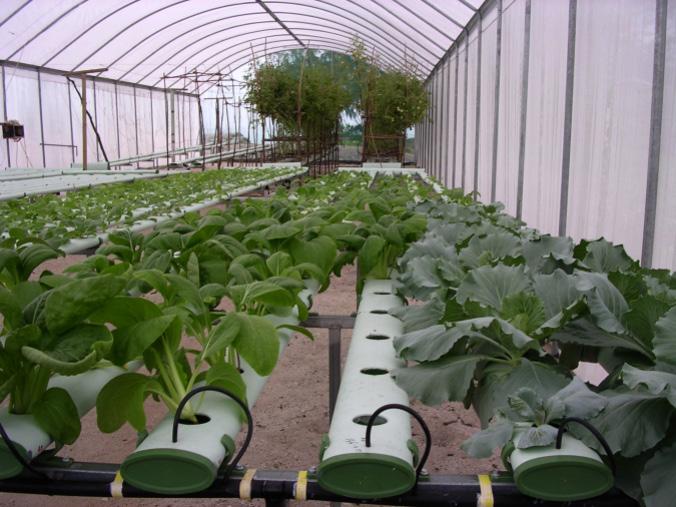
Health Education 9.1-9.2
Community Based Workshops
Educating the population is important to create motivation for pursuing healthy lifestyles. Parnerships with the Wellness Center, hospital, and government agencies lead to an increased value of healthy living nationwide.
School System Integration
Integrating nutrition and health education into the public school system helps inform kids early to live and eat healthily. Partnerships between school cafeterias and urban farms leads to proper nutrition within the school systems.
Majuro, Republic of the Marshall Islands
Urban Farm in Kiribati

Policy Summary: Health
TARGET FOCUSES
Policy Implementation Measure Indicator Responsible Agencies Funding
7.1 Improve access to healthy produce and reduce cost for consumers. (See also 3.1-3.3)
7.2
7.3
8.1 Create walkable and bikeable roads in the Downtown Delap area.
8.2
9.1 Educate the local population on proper nutrition and healthcare.
9.2
Promote the development of urban indoor farms on island, especially in underutilized areas.
Provide subsidies for urban farming infrastructure (hydroponic systems, water recycling systems)
Support the distribution of local produce. Develop a produce distribution network connecting urban farms with schools, hospitals, and local markets.
Implement 5’ bike lanes and 4’ sidewalks throughout Lagoon Rd, and all other streets in downtown Delap
Implement bike racks throughout Delap city center and at key points throughout the island.
Launch community-based workshops on nutrition and cooking healthy meals.
Partner with schools to integrate health and nutrition education into the curriculum.
# of urban farms established, % decrease in produce costs
Amount of subsidies provided, % increase in local food production
% of local produce in local groceries
Ministry of Agriculture, Ministry of Education, PSS COFA Funding, Urban agriculture grants
% of biker and pedestrian usage Ministry of Infrastructure COFA
# of bike racks installed
# of workshops held, % increase in health literacy (surveys)
# of school adopting health ed programs
Ministry of Health & Human Services, PSS COFA, WHO grants
1.1 Partner with developers and locals to develop key resort destinations appealing to a range of tourists.
1.2
1.3
1.4
2.1 Increase production of locally manufactured goods, lessen reliance on imports
3.1 Promote the development of indoor urban farms
(see also: 7.1-7.3)
MASTER POLICY LIST
Establish transportation network from resort housing to key tourism destinations. %increase in tourist visits & visas Ministry of Finance, Office of Tourism, CMI, UPC COFA, Private Developers
Develop tourism infrastructure (information centers, bike shops, scuba shops) Provide subsidies for relevant developments.
Conduct natural resource, land, and market evaluations to determine possible sites and development sizings.
Train locals in tourism-related jobs (hospitality, tour guides) and promote cultural tourism.
Promote opportunities for the sale of local goods and handicraft at public markets
Provide financial incentive for people investing in urban farming infrastructure (e.g., greenhouses, hydroponic systems). Offer tax breaks to property owners who dedicate portions of their land to farming initiatives.
3.2 Facilitate local farmers’ markets where urban farmers can sell their produce, creating a direct market for their goods. Possible locations include RRE parking lot, old Captiol building, and Delap Park.
3.3 Encourage the conversion of vacant lots and unused government properties into urban farms.
4.1 Protect the built environment against flooding & rising sea levels
Implement a building code requiring developers to adhere to disaster prevention building practices for all new construction.
4.2 Provide incentive for the retrofitting of existing buildings with flood proofing techniques.
4.3 Provide training for construction workers and contractors on flood-resistant design techniques
4.4 Redesign road infrastructure to incorporate natural drainage elements
5.1 Incorporate solar energy generation throughout Majuro Install solar panels on public buildings and provide subsidies for residential solar installations.
6.1 Alleviate the environmental strain resulting from the current waste management system.
6.2
Conduct a comprehensive waste audit to determine waste composition
Establish a waste segregation system for organic, recyclable, and combustible waste.
6.3 Develop a waste to energy incinerator to process combustible landfill
7.1 Improve access to healthy produce and reduce cost for consumers. (See also 3.1-3.3)
Promote the development of urban indoor farms on island, especially in underutilized areas.
7.2 Provide subsidies for urban farming infrastructure (hydroponic systems, water recycling systems)
7.3 Support the distribution of local produce. Develop a produce distribution network connecting urban farms with schools, hospitals, and local markets.
8.1 Create walkable and bikeable roads in the Downtown Delap area.
8.2
9.1 Educate the local population on proper nutrition and healthcare.
Implement 5’ bike lanes and 4’ sidewalks throughout Lagoon Rd, and all other streets in downtown Delap
Implement bike racks throughout Delap city center and at key points throughout the island.
Launch community-based workshops on nutrition and cooking healthy meals.
9.2 Partner with schools to integrate health and nutrition education into the curriculum.
% increase of tourism related businesses
Research findings
# of locals employed in tourism
# of markets held per month Ministry of Natural Resource & Commerce Local govt budget
# of urban farms established Ministry of Natural Resource & Commerce COFA, International NGO Support
# of markets held per month
% of vacant land repurposed
# of new buildings complying with codes Ministry of Public Works COFA, Climate fund grants
% of older buildings retrofitted
# of workers trained
% increase in road coverage w/ drainage features
# of solar panels installed, % of energy generated
Marshalls Energy Company, Ministry of Infrastructure
Completion of waste audit, % breakdown of waste types Ministry of Health & Human Services
% of households and businesses participating
Volume of waste processed by facility, amt of energy generated
# of urban farms established, % decrease in produce costs Ministry of Agriculture, Ministry of Education, PSS
Amount of subsidies provided, % increase in local food production
% of local produce in local groceries
% of biker and pedestrian usage Ministry of Infrastructure
# of bike racks installed
# of workshops held, % increase in health literacy (surveys)
# of school adopting health ed programs
COFA, Private developers
Ministry of Health & Human Services, PSS COFA, WHO grants
TECHNICAL APPENDIX
Triple Bottom Line (TBL): emphasizes the interdependence of environmental health, economic prosperity, and social equity. Sustainable growth seeks to integrate these three dimensions in planning and development.
Environmental: Rising sea levels and frequent flooding threaten the urban environment, highlighting the need for resilient infrastructure.
Economic : Heavy reliance on imported goods and limited local industries stifle economic self-sufficiency.
Social: Limited access to nutritious food and inadequate transportation networks exacerbate health disparities and reduce quality of life.
Eco Tourism: refers to a sustainable form of travel that supports the conservation of natural environments and enhances the wellbeing of local communities. This approach focuses on minimizing environmental impacts, preserving biodiversity, and promoting cultural awareness. It typically involves activities such as wildlife observation, guided nature walks, and eco-friendly accommodations.
Urban Farming: Urban farming is the cultivation, processing, and distribution of food within and around cities. This practice uses innovative farming techniques like hydroponics, aquaponics, and vertical farming to maximize productivity in limited spaces. Urban farming improves local food security, reduces the carbon footprint of food transportation, and promotes community engagement in agriculture.
Flood-adaptiveArchitecture: Flood-adaptive architecture involves designing and constructing buildings and infrastructure to withstand and adapt to flooding and rising sea levels. This approach incorporates principles of resilience and sustainability, addressing climate change challenges in flood-prone areas. Key strategies include elevating structures, integrating natural drainage systems, and using flood-resistant materials.
Waste to Energy (WTE): Waste-to-energy is a process that converts non-recyclable waste materials into usable forms of energy, such as electricity, heat, or fuel. This technology reduces landfill usage while generating energy to power communities. Common methods include incineration, anaerobic digestion, and gasification.
REFERENCES
Databases
http://data.un.org/Explorer.aspx
https://ourworldindata.org/country/marshall-islands
Human Development Reports
https://hdr.undp.org/data-center/specific-country-data#/countries/MHL
Census Data
https://spccfpstore1.blob.core.windows.net/digitallibrary-docs/files/60/605c69d76a40195baa447b5a558b0e02.pdf?sv=2015-12-11&sr=b&sig=D70T2 c%2FgMeilt6Z69agYCIztXityQlvTf3SLGUGtgyU%3D&se=2025-03-23T18%3A04%3A45Z&sp=r&rscc=public%2C%20max-age%3D864000%2C%20maxstale%3D86400&rsct=application%2Fpdf&rscd=inline%3B%20filename%3D%22Marshall_Islands_2021_Census_Vol1_Table_report.pdf%22
EPPSO stats
https://rmieppso.org/
Articles/Blogs
Climate Change
https://www.cnn.com/interactive/2015/06/opinions/sutter-two-degrees-marshall-islands/ Landfill
https://pacwasteplus.org/news/majuro-landfill-update-on-the-state-of-emergency/
Kili Atoll History
https://www.abc.net.au/news/2023-09-24/researchers-drawn-to-bikini-atoll-nuclear-turtles-spongebob/102862316
Travel Monopoly
https://www.guampdn.com/news/leaders-micronesian-travel-is-among-the-most-expensive-in-the-world/article_4903725e-23d3-11ef-8ad9-6f46cdaaa1d2. html
Adapting to Rising Sea Levels - World Bank
https://storymaps.arcgis.com/stories/8c715dcc5781421ebff46f35ef34a04d?cid=ECR_YT_Worldbank_EN_EXT
Jiwa Studio - Resort Planning
https://jiwastudio.blogspot.com/2011/12/171-integrated-master-planning-for.html
National Adaptation Plan - About https://blogs.worldbank.org/en/climatechange/against-the-rising-tide--the-marshall-islands--national-adaptati Hydroponics - Freight Farm
https://www.freightfarms.com/blog/islands
Nauru Organic Learning Farm Center
https://www.youtube.com/watch?v=WICw-nKWZ28
Cars that Eat Paradise - Automobile Deterioration and Disposal Issues
https://www.abc.net.au/news/2020-03-15/cars-that-eat-paradise-narrative-feature/12001916
